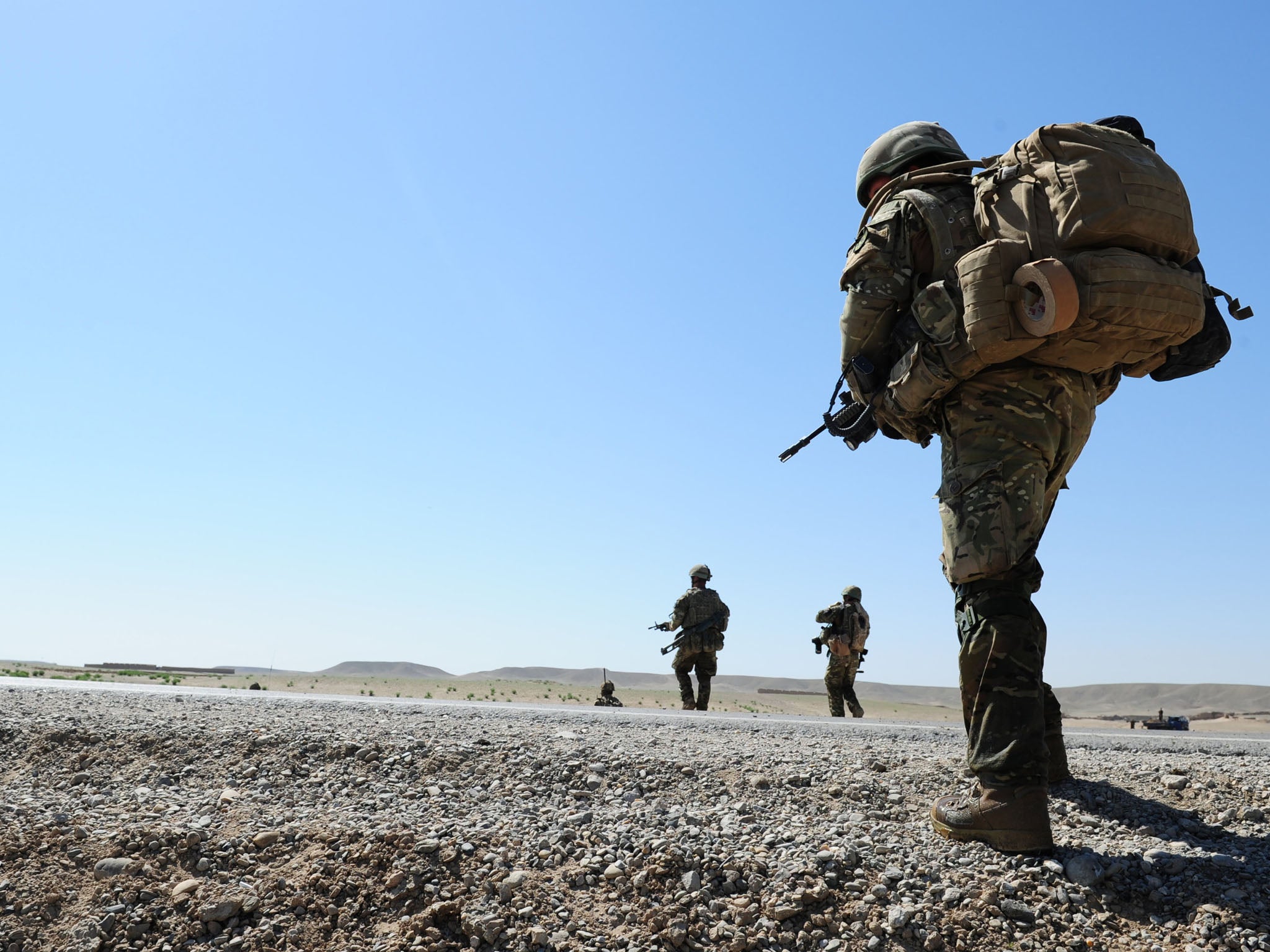US military blames many Afghan insider attacks on personal causes

Your support helps us to tell the story
From reproductive rights to climate change to Big Tech, The Independent is on the ground when the story is developing. Whether it's investigating the financials of Elon Musk's pro-Trump PAC or producing our latest documentary, 'The A Word', which shines a light on the American women fighting for reproductive rights, we know how important it is to parse out the facts from the messaging.
At such a critical moment in US history, we need reporters on the ground. Your donation allows us to keep sending journalists to speak to both sides of the story.
The Independent is trusted by Americans across the entire political spectrum. And unlike many other quality news outlets, we choose not to lock Americans out of our reporting and analysis with paywalls. We believe quality journalism should be available to everyone, paid for by those who can afford it.
Your support makes all the difference.The Taliban has billed a rash of insider attacks targeting international troops in Afghanistan as an effective battlefield strategy, but detailed data disclosed recently by the US military suggest that the largest percentage of such incidents probably stemmed from personal motives rather than enemy infiltration.
Of the 79 insider attacks from May 2007 to September 2012, military investigators found that 38 percent were likely to have been triggered by personal motives; 6 percent were suspected cases of enemy infiltration; and 14 percent were attributed to co-option, in which insurgents persuaded a member of the security forces to help carry out an attack. The cause of 38 percent of the cases was unknown or still under investigation.
The data on attacks by Afghan security personnel or military interpreters were included in a Pentagon report to Congress on operations in Afghanistan that was released last week.
After a sharp uptick in the number of "green on blue" attacks in the summer, the U.S. military temporarily suspended joint patrols. At least 116 NATO troops have been killed in insider attacks since 2007, including 51 this year.
U.S. officials say they remain focused on enhancing training and security procedures to mitigate what they see as an enduring threat. As of Oct. 13, insider attacks accounted for 21 percent of NATO combat deaths in Afghanistan this year, an all-time high since the military started tracking such incidents in 2007.
"I would be very loath to say that it's a problem that's been solved," a senior defense official said last week, briefing journalists on the Report on Progress Toward Security and Stability in Afghanistan, which is issued twice a year. "It's a problem we will continue to address."
The official, who spoke on the condition of anonymity per department protocol, said that regardless of the motive behind insider attacks, "they were all used by the Taliban as part of their narrative."
The U.S.-led coalition in Afghanistan has developed several initiatives to combat the threat, increased its emphasis on cultural sensitivity and established a "guardian angel" system in which designated American troops watch over their comrades during meetings and patrols with Afghans.
An Oct. 12 Army draft handbook on the insider threat in Afghanistan summarized a handful of cases in which Afghans opened fire on their foreign allies, providing a rare window into the kind of situations that sparked attacks. The draft said many altercations occurred because foreign troops "lack empathy for Muslims and/or cultural norms, resulting in a violent reaction" from Afghan troops.
One of the shootings cited occurred during an argument over the propriety of smoking during the holy Muslim month of Ramadan, according to the draft manual, which was obtained by The Washington Post. While waiting outside a meeting of U.S. and Afghan security leaders, an American soldier asked an Afghan for a lighter so he could smoke.
"The [Afghan soldier] refused and rebuffed the U.S. service member for wanting to smoke during Ramadan," a period in which Muslims fast and refrain from smoking during daylight hours, according to the draft. "The U.S. service member cursed the [Afghan soldier] and disparaged his religious beliefs," the report said. As the argument escalated, the Afghan raised his weapon. Both the Afghan and the American fired shots, and both were wounded.
The 75-page manual, which the U.S.-led command in Afghanistan has not adopted or endorsed, contains several recommendations, including that foreign and Afghan troops should avoid discussion of religion, women, sex and human rights. The authors of the draft, which was disclosed by The Wall Street Journal, also suggested that female foreign troops avoid wearing shorts around Afghan men.
Ahmad Shuja, an Afghan writer and analyst who heads the Washington-based Foundation for Afghanistan, said leaders of the U.S.-led International Security Assistance Force in Afghanistan have done a good job of understanding and explaining the cultural differences that have created friction.
"That's the easy part," Shuja said. "The hard part is translating that knowledge down to the fighting unit: changing ISAF soldiers' behavior and changing how an Afghan soldier perceives a cultural faux pas."
Join our commenting forum
Join thought-provoking conversations, follow other Independent readers and see their replies
Comments